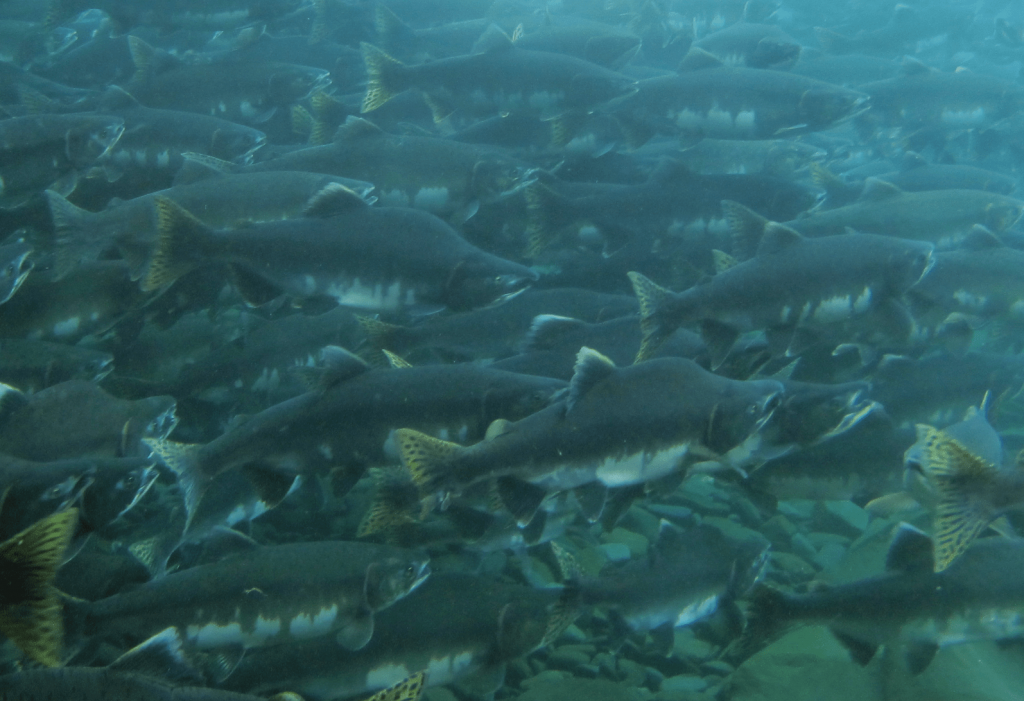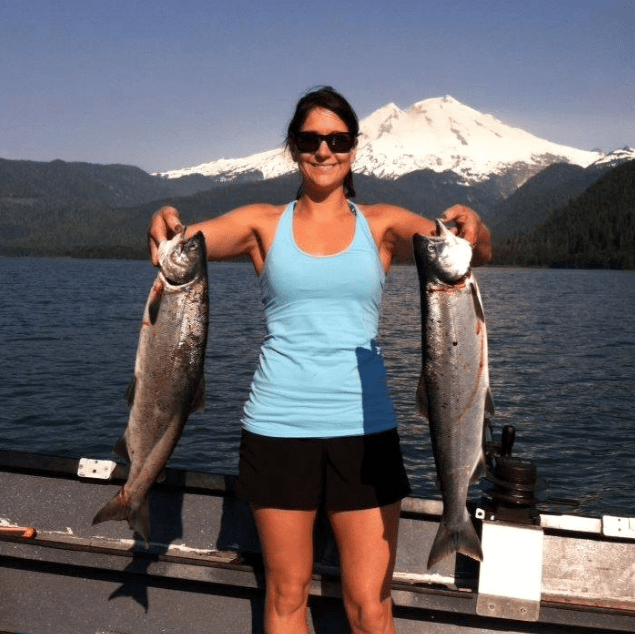
Southern Sockeye Stocks 15 Percent Less Productive Due To Warm Ocean, High Pink Numbers: Paper
It’s well known in the Northwest that marine mammals, piscivorous birds and predatory fish – both native and non – are having big impacts on our salmon numbers, but a brighter and brighter light is being shed on two growing factors at sea for one species.
Sockeye productivity for rivers at the southern end of their range in the North Pacific was 15 percent lower on average between 2005 and 2015 due to warm ocean conditions and the 82 million pink salmon pumped out annually by hatcheries in Alaska and Asian countries, Russia in particular.
That’s according to a paper published in late May in Canada’s NRC Research Press and which adds to work over the past 10 years looking into the artificially high abundance of pinks.

Essentially, Canadian, US, university and private researchers looked at records for 47 stocks from the Fraser north to Southwest Alaska and how warm the ocean was when sockeye smolts entered the Pacific and compared that with how abundant their competitors were as they grew to adulthood in their saltwater pastures.
“What the team found was that a warm ocean and abundant salmon competitors combine to reduce sockeye survival for southern stocks including those from the Fraser River in British Columbia,” summarized Sidney Gerst in an article on the paper posted to the National Center for Ecological Analysis and Synthesis, a UC Santa Barbara research affiliate.


“In contrast in northern stocks, including those in Bristol Bay where record setting returns in recent years have supported large commercial fisheries, a warm ocean substantially increases survival and appears to offset the negative effects of competition at sea,” Gerst added.
Last year saw at least 126.6 million pinks harvested in Alaska waters, according to that state’s salmon managers, about average for odd years since the 1990s, and roughly half 2013’s catch.
Northern sockeye stocks were only diminished 5 to 10 percent by high pink production, according to the paper.

British Columbia and Lower 48 anglers are well aware of sockeye woes.
Last year’s Fraser run came in at an eighth of the forecast, Lake Washington’s is all but done, Baker Lake’s 2020 return is expected to be the lowest in more than 10 years, and this year’s Upper Columbia prediction is well off high marks in the middle of last decade.
As low numbers of sockeye returned last summer, WDFW biologist Marissa Litz called the downward trend for southern stocks “disturbing.”
Along with ocean conditions, she told me that the lake and river residency period for the salmon shouldn’t be overlooked either.



“A new paper by a group of federal scientists assessed threatened and endangered stocks in the Western U.S. and found that freshwater residency time makes salmon vulnerable to climate change, with gradations from south to north and coastal to interior. Sockeye typically spend a full two years in freshwater before migrating to the ocean. They are vulnerable to warming stream temperatures and lower stream flows,” Litz said.
“And then when they head to the ocean, they arrive to the productive feeding grounds later than Alaska fish, and one hypothesis is that they aren’t as competitive as the Bristol Bay fish and the hordes of hatchery pink and chum in the North Pacific,” she said, adding that at that time, “More work needs to be done to test this idea.”
In the case of Lake Washington sockeye, predation by cutthroat, pikeminnow and other fish has a strong impact on fry survival, while adult passage through the warm ship canal exposes them to water temperatures that are killing more than half that swim through the Ballard Locks on the way to the Cedar River.
Certainly Columbia sockeye were likely impacted at sea by The Blob, the marine heatwave, and they definitely were by it when they tried to swim up the river in 2015, with something like a quarter of a million disappearing between Bonneville and McNary Dams due to low, hot water.
One of the new paper’s coauthors, Dr. Greg Ruggerone of Natural Resources Consultants in Seattle, has been studying pinks and warning about their high numbers for some time now.
“Our work contributes to a growing body of evidence that increasing abundances of salmon across the North Pacific, and in particular pink salmon, are linked to a trophic cascade resulting in fewer zooplankton, reduced growth, survival and delayed maturation of salmon and other marine fishes, reduced reproductive success of seabirds, and perhaps even reduced foraging efficiency of southern resident killer whales,” he tells NCEAS’s Gerst.
The fate of those orcas is tied to Chinook that return to Puget Sound and the Columbia, among other rivers.
Get the family out of the house for National Camping Month and don’t forget the essentials! Shop Bass Pro Shops
